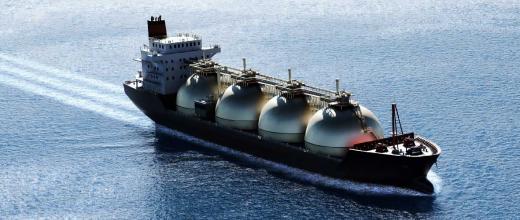11.07.2022
5 minutes of reading
Rolling out CCUS: a question of costs and infrastructure planning | Paula Coussy
In this second episode, IFPEN takes a more concrete look at how CCUS will be implemented, with Paula Coussy, Carbon Externalities project manager at IFPEN: from capture through to storage or use of CO2, what are the scenarios for the large-scale roll-out of CCUS? While the question of costs plays a critical role, for industrial players the decision to invest also depends on the coordinated planning of transmission and storage networks.
takeaways from this podcast
CCUS: rolling out infrastructures simultaneously, in the right place
From capture through to storage or use of CO2, including transport via dedicated infrastructures, CCUS refers to a set of technologies deployed across the entire technological chain. Therefore the roll-out of its infrastructures needs to be time-coordinated and the territories willing to host them need to be defined.
How can this be achieved?
- By ensuring the simultaneous availability of infrastructures, preparing all the links in the chain now, so that CO2 can be stored or used after being captured;
- By identifying CO2 hubs that will enable the anticipation of transport and storage infrastructures in a territory
What is a CO2 hub?
A CO2 network or hub brings together different CO2 emissions sources and/or different storage sites by means of a shared transport network, with the aim of pooling costs and reducing risks
How is a CCUS scenario constructed?
Infrastructure planning draws on CCUS scenarios, developed on the basis of a number of factors:
- Technical factors:
- Volumes of CO2 involved
- Geographic zones concerned by capture, transport, use and/or storage
- The possible usages of CO2 close to capture sites, either immediately or in the future
- Potential storage sites for the captured CO2
- Environmental factors: life cycle analysis (LCA) methodologies are used to evaluate CO2 emissions avoided throughout the CCUS chain, but also to quantify the impacts on water resources and requirements in terms of materials.
> Find out more about IFPEN’s solutions in the field of LCA
- As well as economic and social factors relating, in particular, to job creation and the social acceptability of the project in the region(s) concerned.
CCUS: what are we able to project for Europe and France today?
The European Strategy CCUS project, conducted from 2019 to 2022 by the BRGM, IFPEN and 16 other European partners studied the development of CO2 capture, use and storage (CCUS) technologies in eight regions of Southern and Eastern Europe in order to reduce the emissions of industrial and energy production sectors. In the regions in question – two of which are located in France, one in the Rhone valley and the other in the Paris basin – the storage availabilities need to be studied in greater detail since these are pivotal in terms of the roll-out of CCUS.
Launched in May 2021, the PilotStrategy project has taken up the challenge and aims to perform detailed characterization of deep saline aquifers in order to ensure the availability of sites for the storage of the CO2 set to be captured in some of the regions identified in Strategy CCUS.
Funding of CCUS in question
What drives industrial players to invest in CCUS? In short, their decision is based on a trade-off between two expenses:
- The cost of investment in the CCUS chain resulting in CO2 emissions avoided;
- The compliance cost determined by the price of the European quotas on the European Union Emission Trading System (EU ETS).
European carbon quotas in brief
EU Member States impose a cap on the emissions of identified installations in various sectors (electricity, heating networks, steel, cement, refining, glass, paper, etc.) and then allocate them the quotas corresponding to this cap. At the end of each year, the installations are required to return a number of quotas equivalent to their actual emissions. In addition, companies that are subject to the system have the option of trading quotas on the European Emissions Trading System:
- an installation that emits more than its allocation must purchase the missing quotas: this is the polluter-pays principle;
- an installation that emits less than its allocation can resell its unused quotas and thus benefit from revenues, which can be used, for example, to fund investments to help them control their emissions.
Source: French Environment and Energy Management Agency (ADEME)
In order to make this trade-off, industrial players must first quantify their avoided emissions from CCUS technologies accurately and officially. That’s why the application of a common accounting methodology to CCUS, enabling the measurement, reporting and verification of actual CO2 emissions avoided, is a priority. This is what’s known as the MRV methodology, which stands for Monitoring, Reporting and Verfication.
According to current estimations, the carbon emission quota price* is significantly lower than the expenses that would be incurred to deploy the CCUS chain. Other types of public and private funding are being explored to make investing in CCUS at least equivalent to continuing to emit CO2, in terms of cost.
From an environmental and societal point of view, CCUS offers undeniable benefits; the challenge now is to find the financial tools to encourage industrial players to make the necessary investment.
 Our solutions > CO2 capture, utilization and storage
Our solutions > CO2 capture, utilization and storage









